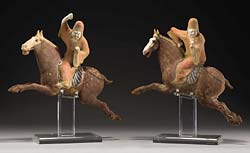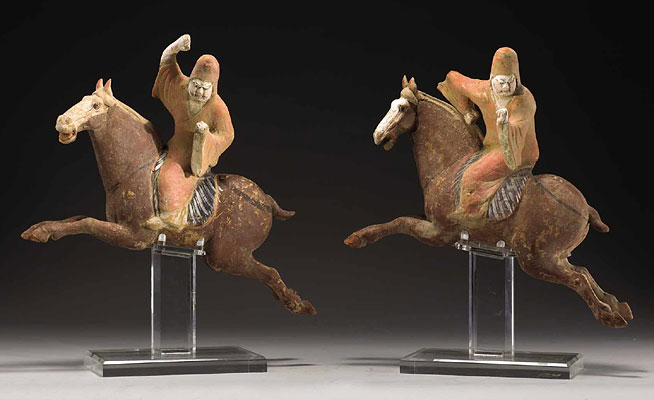Much controversy surrounds the origin of polo. Tibet, China, Iran, India, and Central Asia have all been proposed as homelands for the game. It remains possible that the game had more than one point of origin, though a recent study has argued convincingly that polo developed in northeastern Iran out of the equestrian chase games played by the mounted nomads of Central Asia in the last centuries before the Common Era.
Polo probably was introduced to China sometime between the end of the Han period (206 B.C.E.–220 C.E.) and the early part of the Tang dynasty(618–907). It seems likely that it was introduced by the Xianbei tribes that controlled northern China from the fourth to sixth century. In the steppe areas to the north, pastures are abundant and good for breeding horses. The Xianbei, because of their nomadic origins, had a great fondness for horses, a trait that (like many aspects of their culture) was inherited by the Chinese of the Tang dynasty. It is also notable that the Xianbei accorded higher status and more physical freedom to women than the Chinese dynasties, and women became avid polo players under the Tang dynasty.
In Iran, polo became the sport of kings and a metaphor for manly virtues. Although it was during the Safavid period (1501–1722) that polo was pursued most fanatically, the game was played in much of the Islamic world. Polo played an important role in the lives of the most famous rulers of the Mughal empire (1526–1858), and it is often assumed that the Mughals introduced polo to northern India. In fact, the history of polo in northwestern India predates the Mughal era. India played a crucial role in the spread of the game. Although polo reached Europe during the Crusades, it did not take root in the West until its adoption by the British colonials in India during the nineteenth century.






